Title: “Meghnath Vadh” – A Symbolic Depiction of Dharma’s Triumph by Artist Rounak Rai
In his bold and expressive Ramayana Series, contemporary Indian artist Rounak Rai offers a visually charged interpretation of iconic mythological events through figurative expressionism and symbolic modernism. One such compelling piece is titled “Meghnath Vadh”, a striking painting that portrays the epic confrontation between Lord Lakshman and Meghnath (Indrajit) — a climactic moment from the Ramayana.
The Scene & Symbolism
In this dramatic composition, Rai captures the intensity and layered symbolism of the battle between Lakshman, the loyal brother and warrior, and Meghnath, the powerful son of Ravan known for his mystic powers and battle strategy.
The central figure, Lakshman, appears white-skinned with fierce red outlines, striking Meghnath in a moment of decisive action. The deep contrast in skin tones — white for Lakshman and dark for Meghnath — symbolizes the age-old conflict between dharma (righteousness) and adharma (unrighteousness). The visual violence is intense yet stylized, with blood shown as red accents, not for gore but for narrative emphasis.
Meghnath is seen mid-defeat, his wrist clutched and weapon rendered useless, symbolizing the unraveling of evil’s dominance. The fire in the foreground, likely his sacrificial yagna, is interrupted, symbolizing the collapse of his tantric shield, which had made him nearly invincible.
To the right, a multi-armed black female figure — evocative of Nikhumbala Devi or a form of Kali — stands as a silent witness, representing the spiritual force Meghnath worshipped. Her raised weapons and ghostly white sari suggest suppressed divine wrath, helpless as adharma collapses by its own weight.
Style & Technique
Rounak Rai’s signature style is evident here — flat colors, angular human forms, exaggerated expressions, and mythic distortion that pulls from folk art traditions like Madhubani and Kalighat painting but reinterpreted through a postmodern lens. The use of red and black adds urgency and depth, reinforcing both ritualistic violence and cosmic justice.
The background characters — colored in unusual greens and blues — might be rakshasas or court spectators, creating a layered narrative space. Rai’s attention to detail is visible in the script painted at the bottom corner, stylized as ancient text carved in red, hinting at the oral tradition and sanctity of the epic.
Thematic Depth
Meghnath, often seen as a tragic hero — righteous in his own terms, loyal to his father — is portrayed here not merely as a villain but a powerful adversary to dharma, whose spiritual power was formidable. But Lakshman’s intervention during the sacrificial ritual, with divine backing and moral clarity, emphasizes the idea that no power — however mystical or mighty — can surpass truth and justice.
Conclusion
With “Meghnath Vadh,” Rounak Rai transforms a mythological episode into a theatrical canvas of conflict, fate, and justice. The painting is not just a representation of a battle; it’s an allegory of inner war, a reflection of moral choices, and an ode to the victory of righteous action over dark ambition. Through his unique visual language, Rai continues to bridge ancient epic themes with contemporary aesthetic sensibilities — offering new ways to interpret timeless stories.

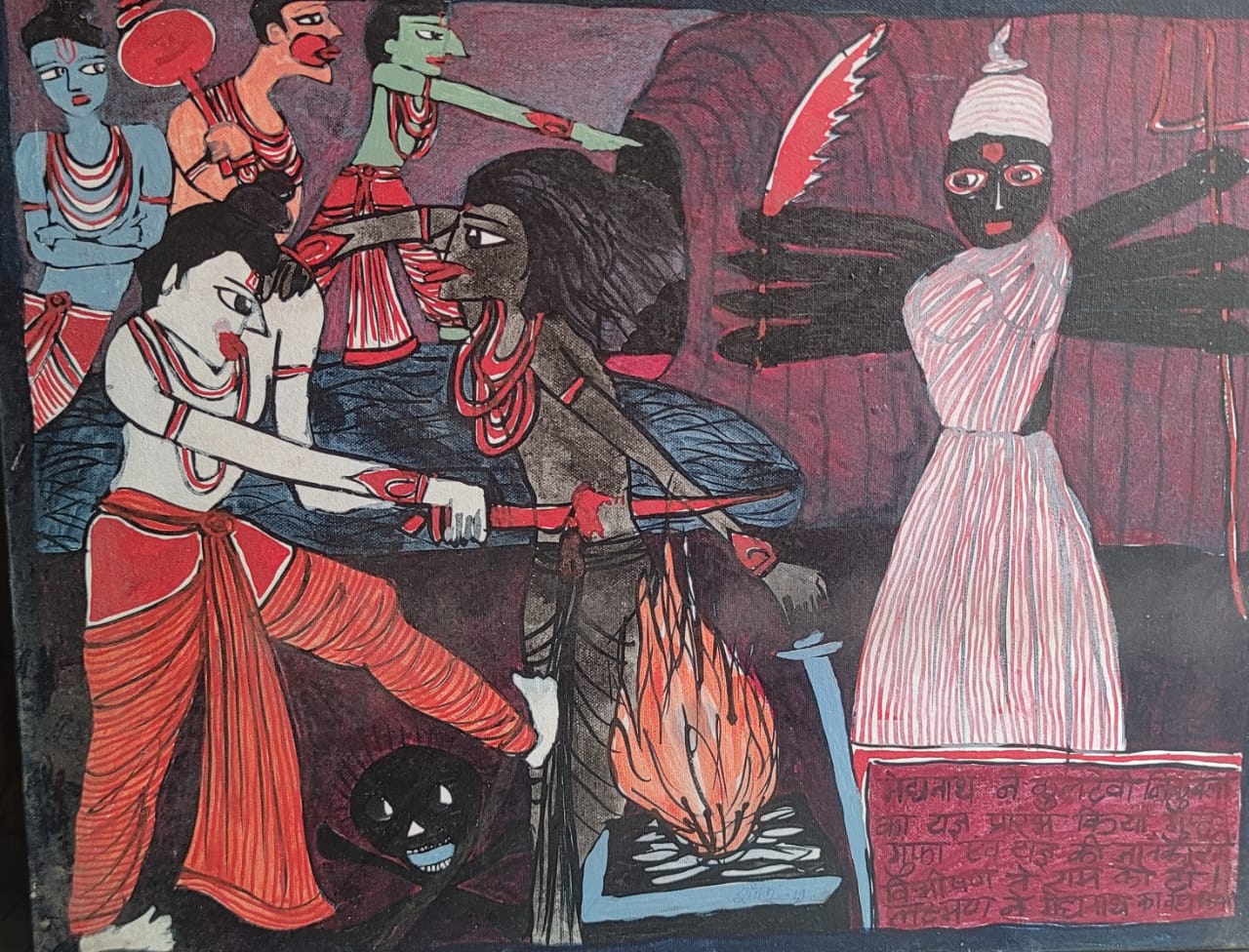
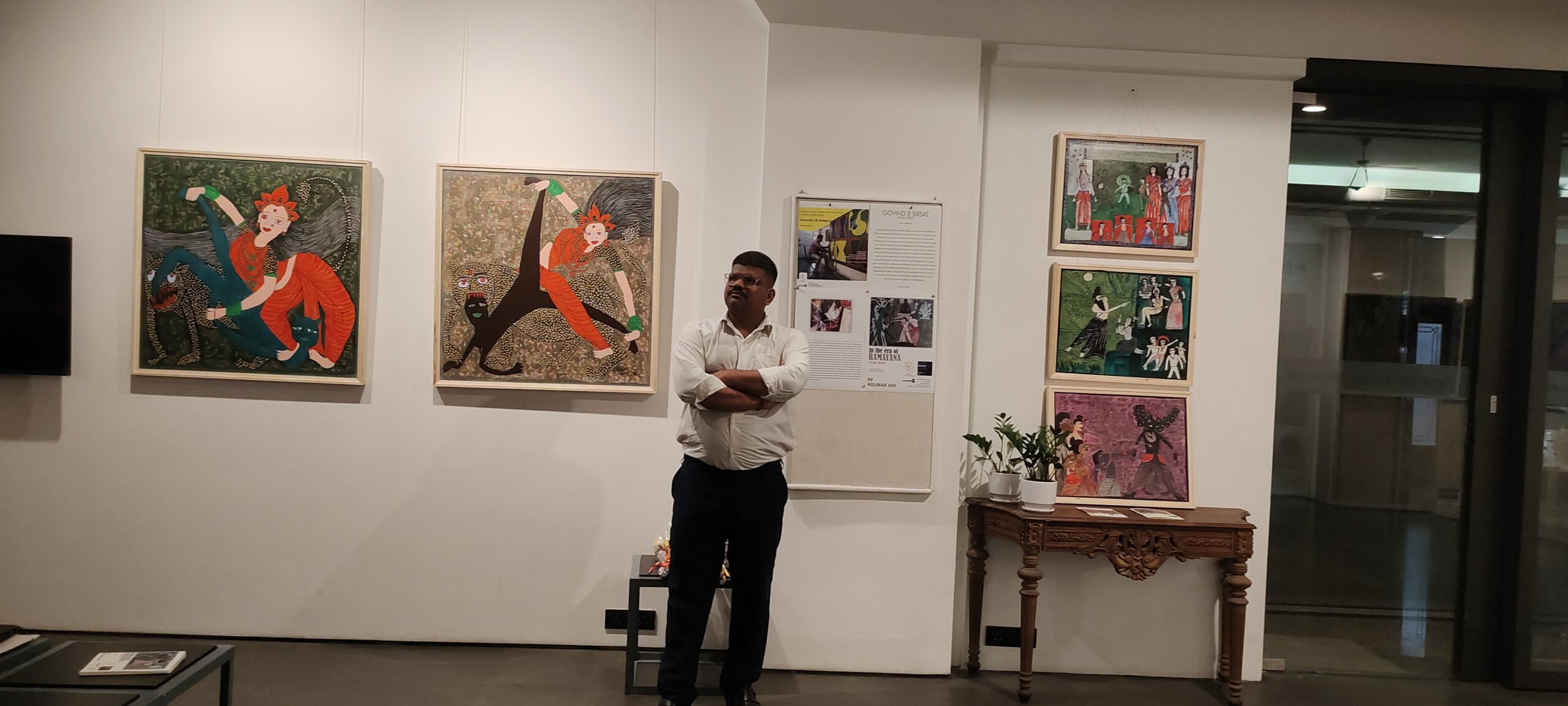
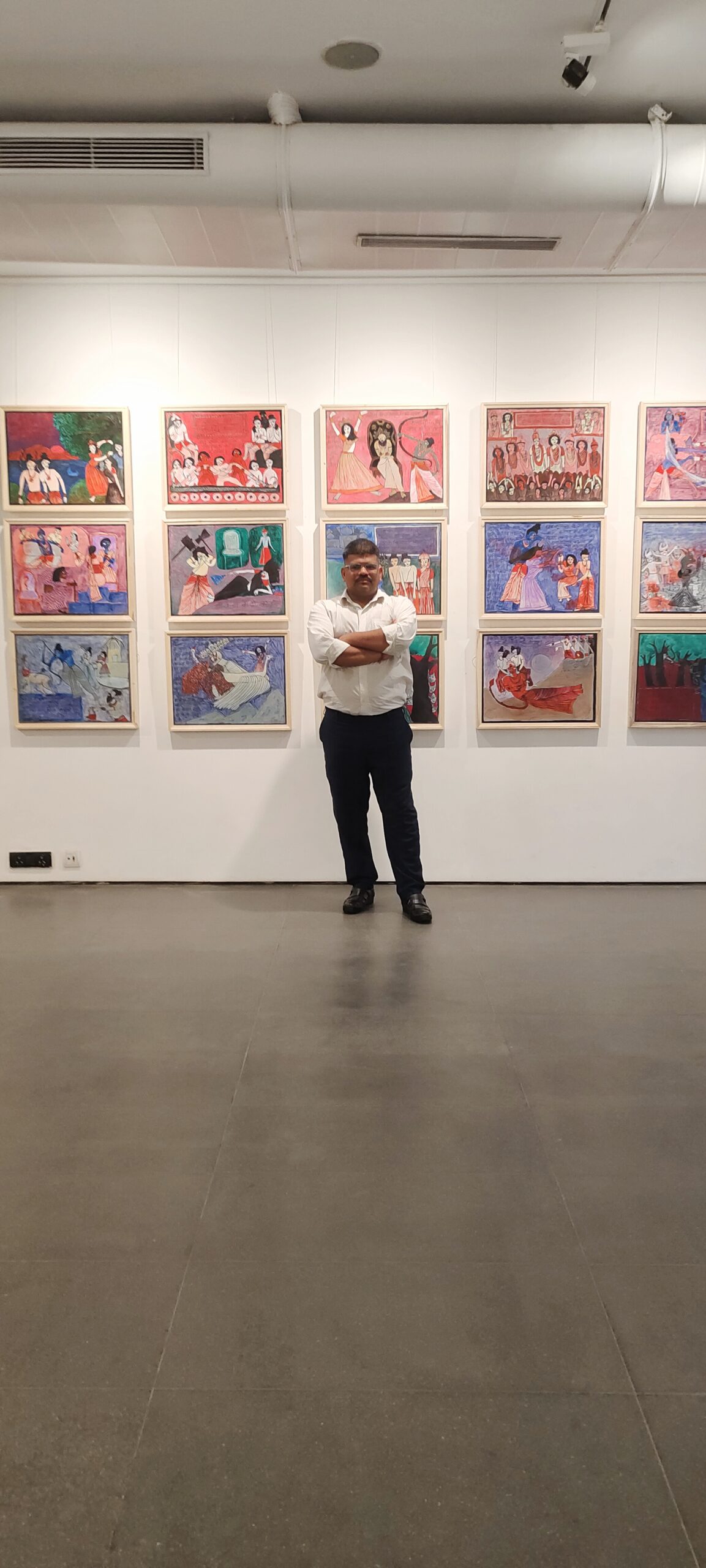
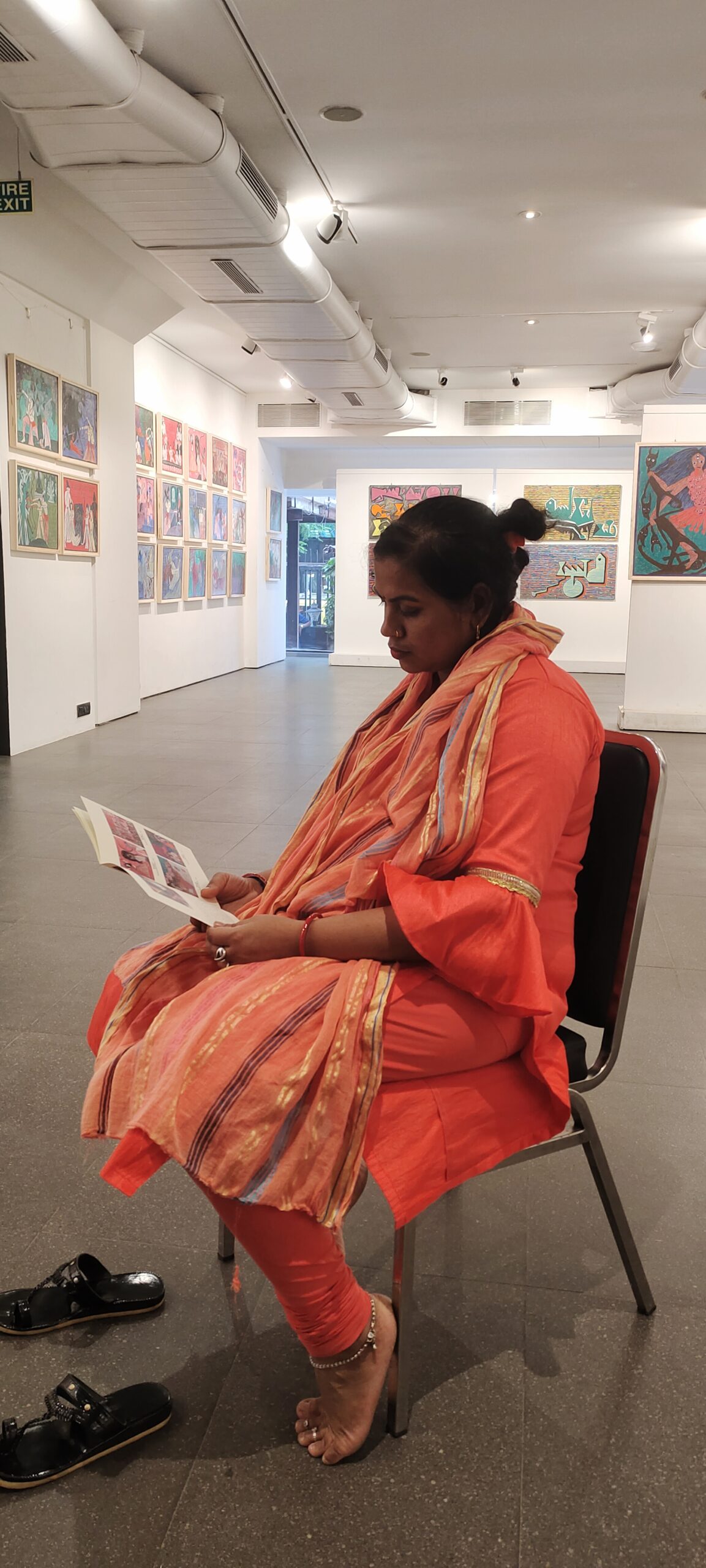
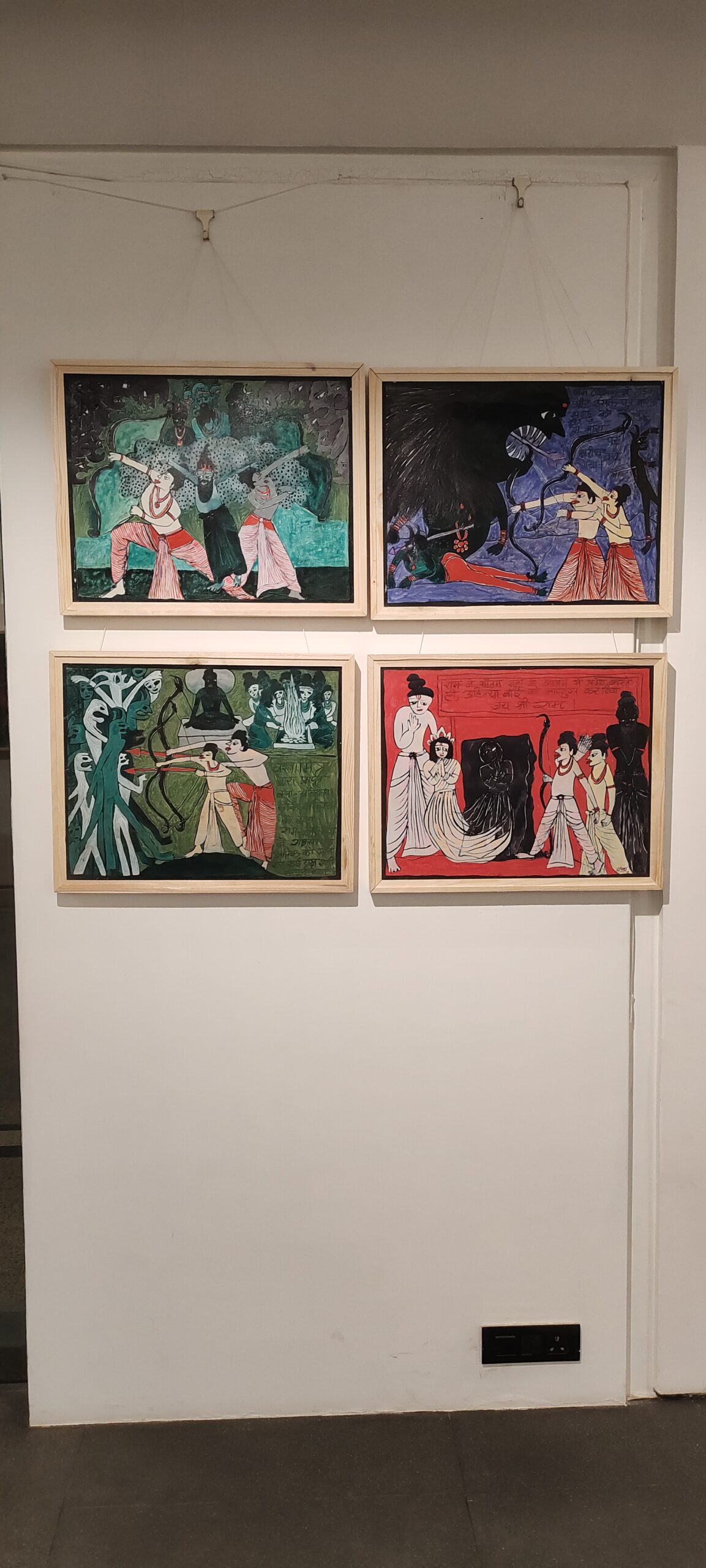
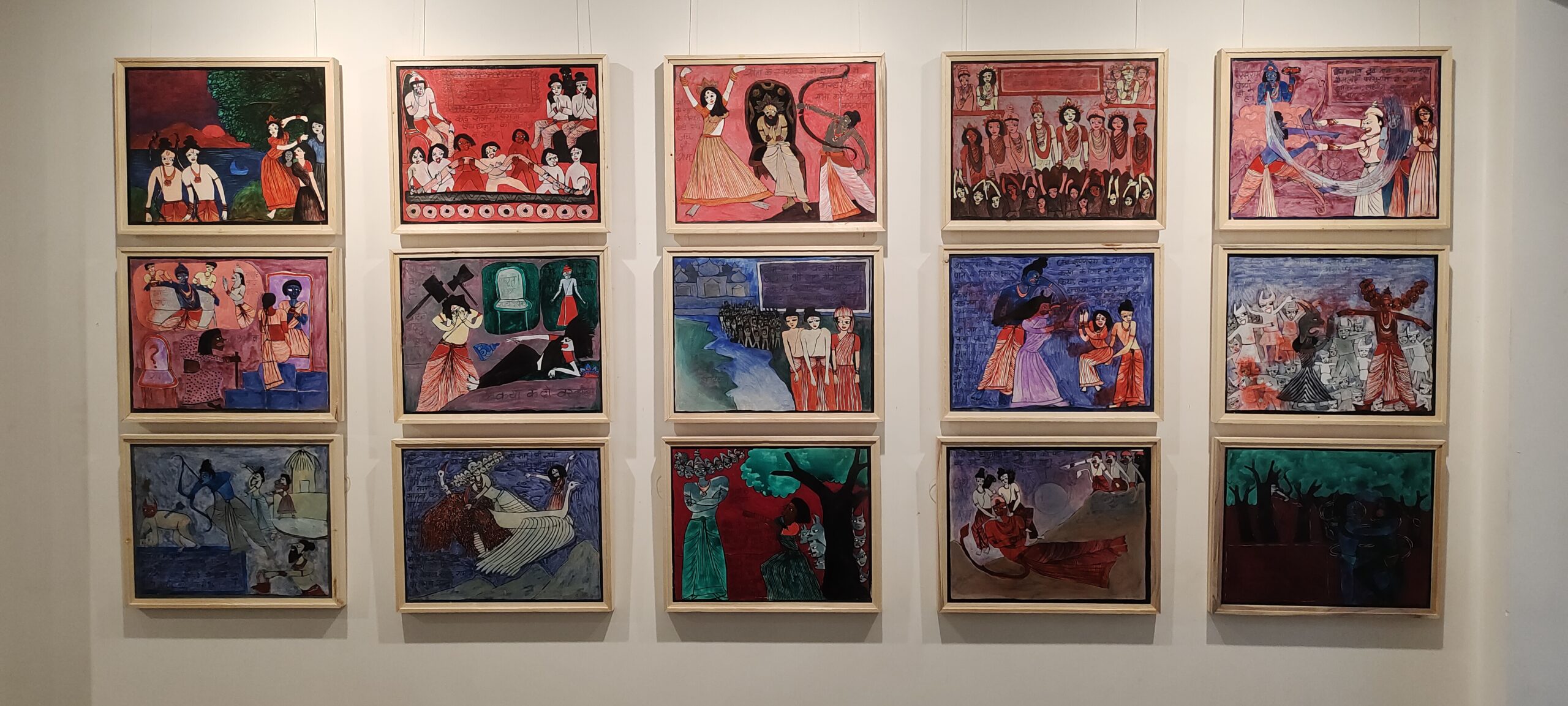
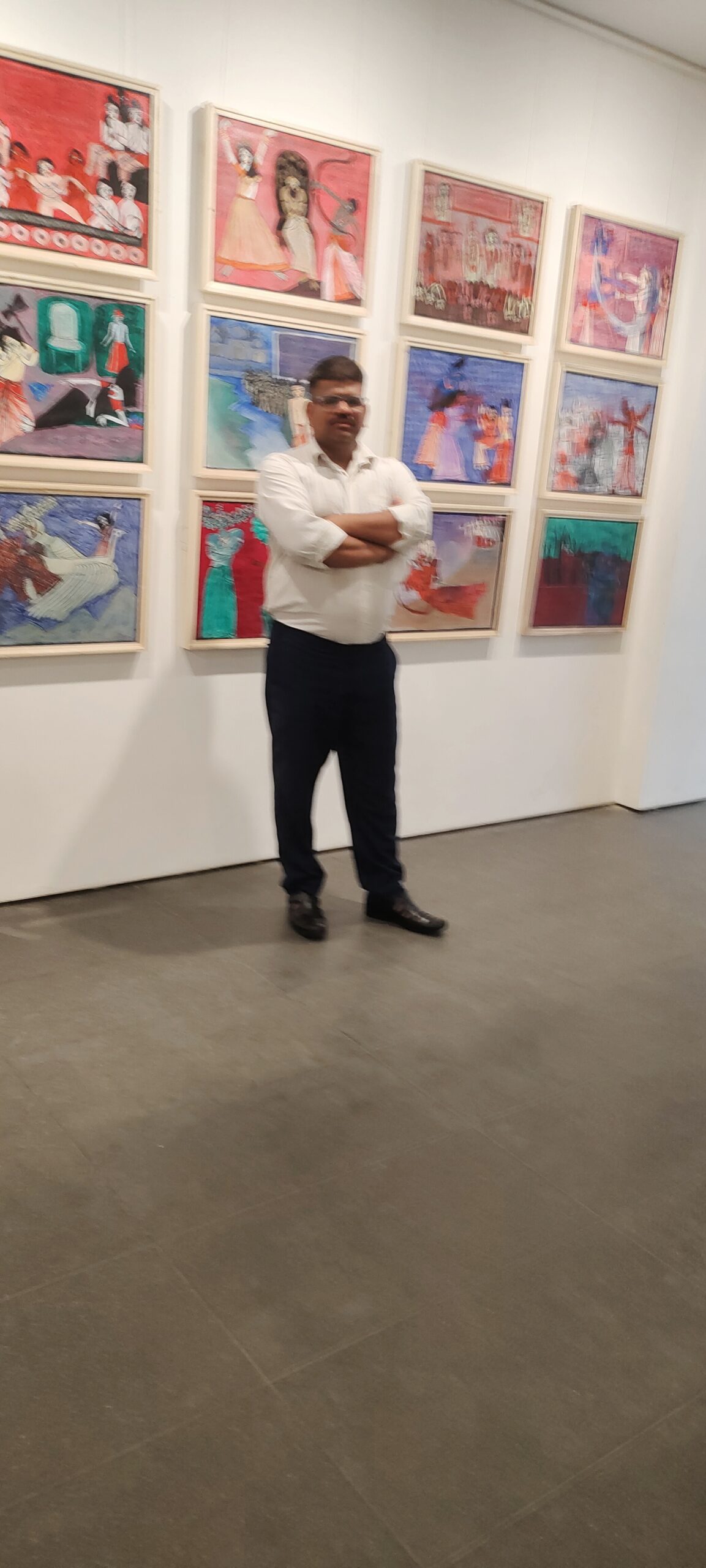


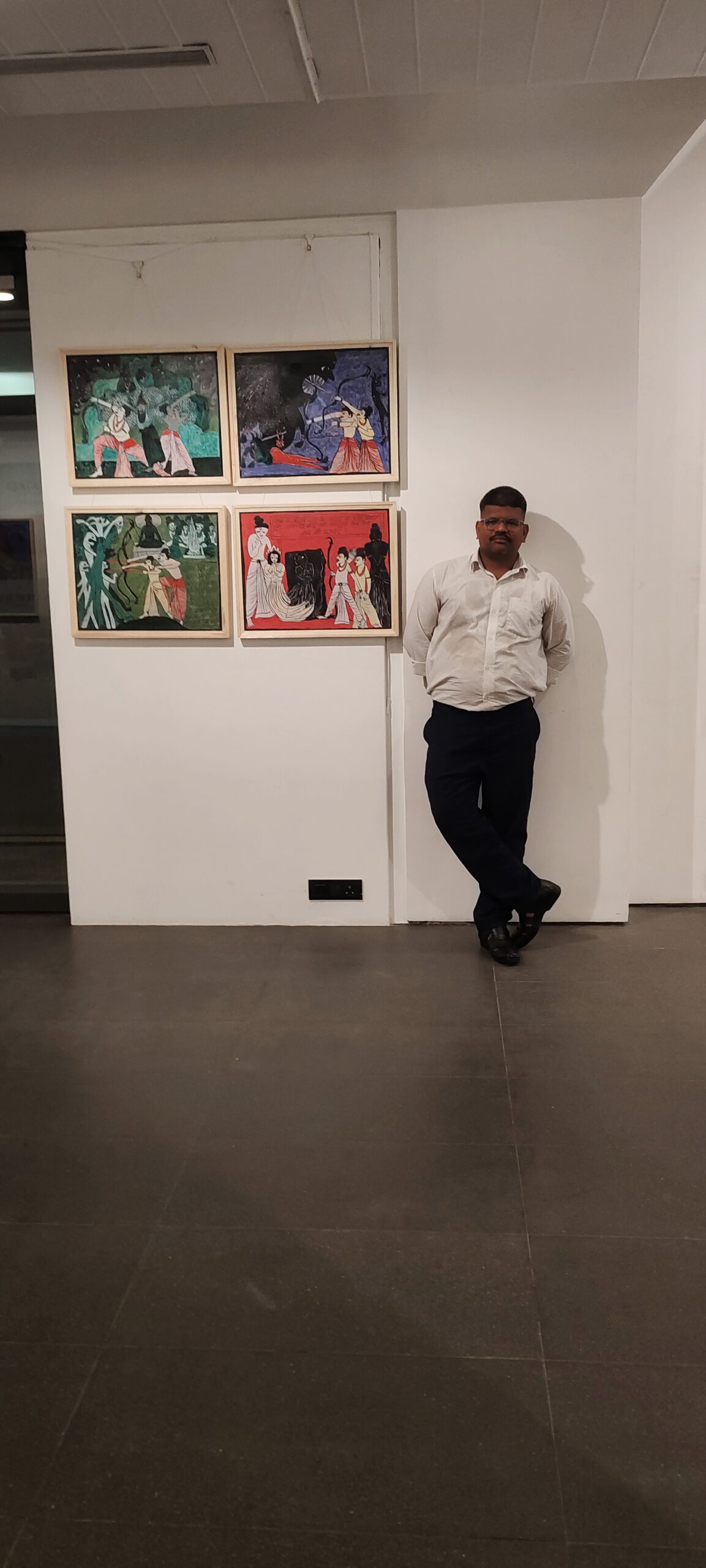
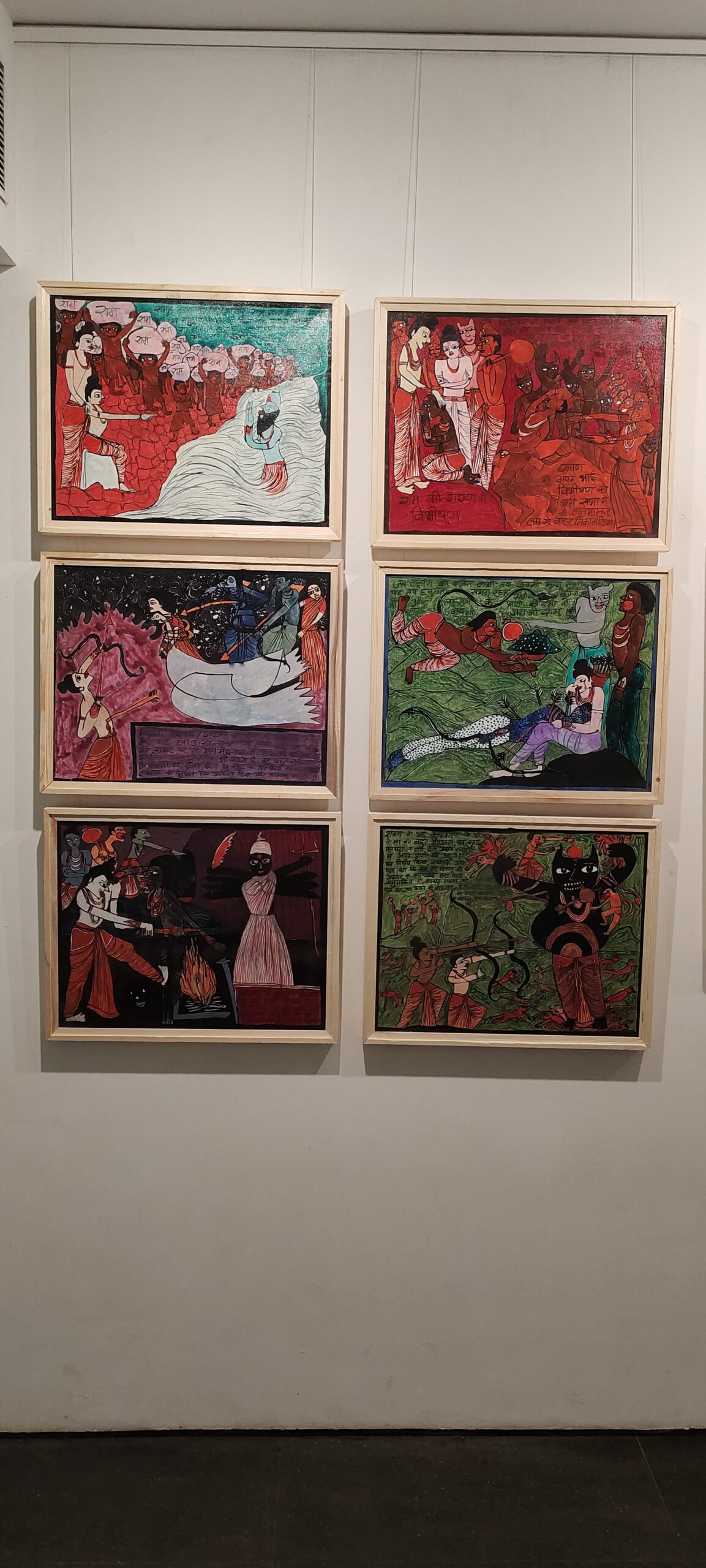

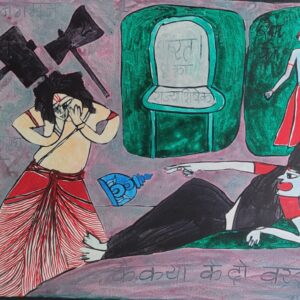
Reviews
There are no reviews yet.